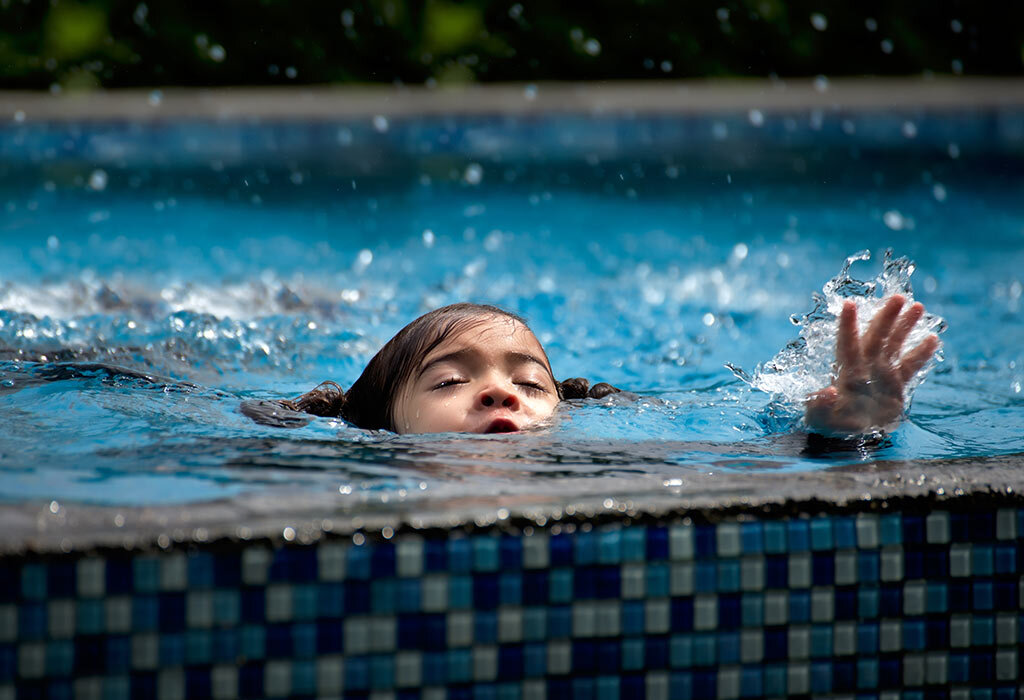Childhood Drowning is Preventable: An Essay from a Dear Friend
Roxie's death has impacted people coast-to-coast, young & old. A dear friend named Eilee Centeno, a recent high school grad, was presented with a scholarship opportunity for which she had to author an essay. The subject was:
"Write an essay about a situation you have been involved in or someone you know has been involved in where better safety procedures would have prevented an injury. Explain in detail what safety procedures you believe should have been in place to prevent the injury and how they would have prevented the injury."
This is Eilee’s essay.
Childhood Drowning is Preventable
My friend Roxie, who was six and a half years old at the time, drowned last summer in her summer camp swimming pool. It was Roxie's first time at camp and despite her being designated a non-swimmer, she was permitted into the pool during a swim period without special supervision or a flotation device.
Early childhood painting from Eilee Centeno to us as a gift.
There were thirty campers in the pool and four counselors on duty. Roxie’s ‘buddy counselor’ was distracted by another camper and a counselor from outside of the pool fence noticed Roxie floating face down in the shallow end of the pool. She was floating for minutes.
On the first day of camp all of the campers’ swimming abilities were tested. Roxie was designated as a non-swimmer, however, that designation did not stop the camp from leaving her unattended in the pool. The camp took the time to test the abilities of the campers, they should have used that information to split the campers up into groups based on ability during swim times, assigning additional counselors/lifeguards to the groups with the lower level swimmers for additional safety. Also, non-swimmers specifically should be provided flotation devices and rules put in place and followed for their use.
The World Health Organization cites that drowning is the number one cause of death outside of birth defects in children aged one-through-four. In the one-through-fourteen age category, drowning is the second most common cause of unintentional death after car accidents.
Many camps are unlicensed and don’t have proper oversight (rules vary from state to state in the US). Daycare centers are required to be licensed, however, camps that host high-risk activities such as swimming in pools and lakes, rock climbing, archery, tomahawk throwing, horseback riding, range shooting and zip lining are not.
Child drownings are deemed ‘accidents,’ but, they really need to be described as negligence, as they are very much preventable. I feel deeply connected to this issue because I lost my close family friend Roxie, who I miss very much. It hurts to think that if the counselors and camp took the right precautions, Roxie would still be here today. Sadly, the same is the case for many other families.
Many people love swimming, kids can’t seem to get out of the pool or the ocean. We often forget the dangers of swimming. Many people think “I can turn around for 30 seconds”, “one minute won’t hurt''. But it does, it's a matter of life or death. Almost 1,000 kids drowned in the US in 2017.
At a minimum, camps should be regulated and licensed. Water safety practices should be monitored, holding camps accountable for implementing proper safety measures. Life jacket programs should be implemented at camps and swim clubs and lifeguard oversight and training requirements implemented in both public and private swim environments. I feel strongly that we need to start understanding that drowning is preventable and take all necessary actions to stop more children from dying.


